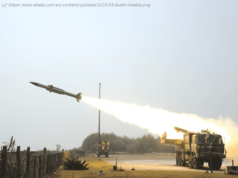Boeing and the International Association of Machinists District 751 and Aerospace Workers District 24 (IAM) reached a tentative agreement for a future contract.
This morning Boeing and the International Association of Machinists District 751 and Aerospace Workers District 24 (IAM) reached a tentative agreement for a future contract. Boeing’s website highlighted the tentative contract agreement and highlights, while the IAMs website shared a summary of the proposed contract with a IAM Union leadership recommending acceptance for its members. Boeing and the IAM have been operating under a current 16-year contract for Boeings Puget Sound factories that is due to expire September 12, 2024. The IAM has 36,000 members as a part of Boeings 173,000 workforce representing approximately 21% of Boeing’s total workforce.
Robert Spingarn, an Analyst at Melius Research recently published all the IAM strikes total duration in days at Boeing. For relevancy to more recent times utilizing strike data points in 1996, 2005 and 2008 lead to 69, 24 and 58 days of missed production respectively. These three most recent strikes averaged 50 days of missed production and deliveries to airline customers.
A tentative labor agreement between Boeing and the IAM is good news for the industry because a strike would have had significant negative effects on Boeing and the supply chain. Michael Bruno, Executive Editor for Business at Aviation Week recently said that “Past strikes at Boeing came as workers fought for relevancy – now they come as Boeing fights for survival long-term.”
To further the point of negative effects on Boeing, George Ferguson, Bloomberg Intelligence Aerospace Analyst shared his perspectives this past week on a Bloomberg webinar that I was also a contributing panelist. Ferguson shared that Boeings cash balance at the end of second quarter was $11 Billion and Boeing might need to tap capital markets to raise cash, and a strike would have accelerated this activity. Ferguson further added that if there was a work stoppage at Boeing that their currently high inventory levels of more than $80 Billion would be at risk of increasing further increase cash usage.
The aerospace and defense industry has had a challenging couple of years but has remained resilient in the face of problematic quality system issues, human health, geopolitical and financial challenges.






